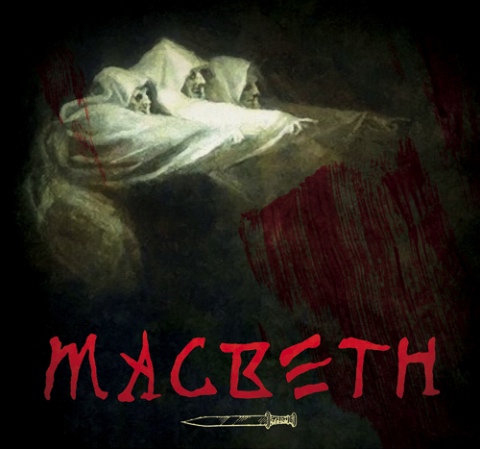
The
Scottish Play and the The Bard's Play are euphemisms for William
Shakespeare's Macbeth. The first is a reference to the play's Scottish
setting, the second a reference to Shakespeare's popular nickname.
According to a theatrical superstition, called the Scottish curse,
speaking the name Macbeth inside a theatre will cause disaster. A
variation of the superstition forbids direct quotation of the play
(except during rehearsals) while inside a theater.
Because of this superstition, the lead character is most often referred
to as the Scottish King or Scottish Lord. Sometimes Mackers is used to
avoid saying the name, mostly in North America.
As success or failure in the theater can be influenced by so many
intangible and unpredictable factors, it's not surprising that actors
and other theater types maintain a variety of long-standing
superstitions, which often are taken very seriously. (The most famous is
the insistence on saying "break a leg" rather than "good luck.")
Two such superstitions float around Macbeth. The first is that it's bad
luck to even say “Macbeth” except during rehearsal or performance. When
referring to the work one instead uses circumlocutions, such as “the
Scottish play” or “Mackers” or “the Scottish business” or “the Glamis
comedy” or just “that play." Some say this rule applies only when inside
a theater; it’s OK, therefore, to use the dread name in other settings –
like classrooms, for instance.
The remedy, if someone does happen to utter the unutterable, is to leave
the room, close the door, turn around three times, say a dirty word (or
spit, some say), then knock on the door and ask to be let back in. If
you can’t do all that, you simply quote from Hamlet, act 1, scene 4:
“Angels and ministers of grace defend us!”
The second superstition is that the play itself brings ill luck to cast
and crew, and many productions of Macbeth have, in fact, encountered
unfortunate circumstances. The supposed origin story for this is that
Shakespeare used “authentic” witches’ chants in the play; as punishment,
real witches cast a curse on the play, condemning it for all time.
The Curse of Macbeth
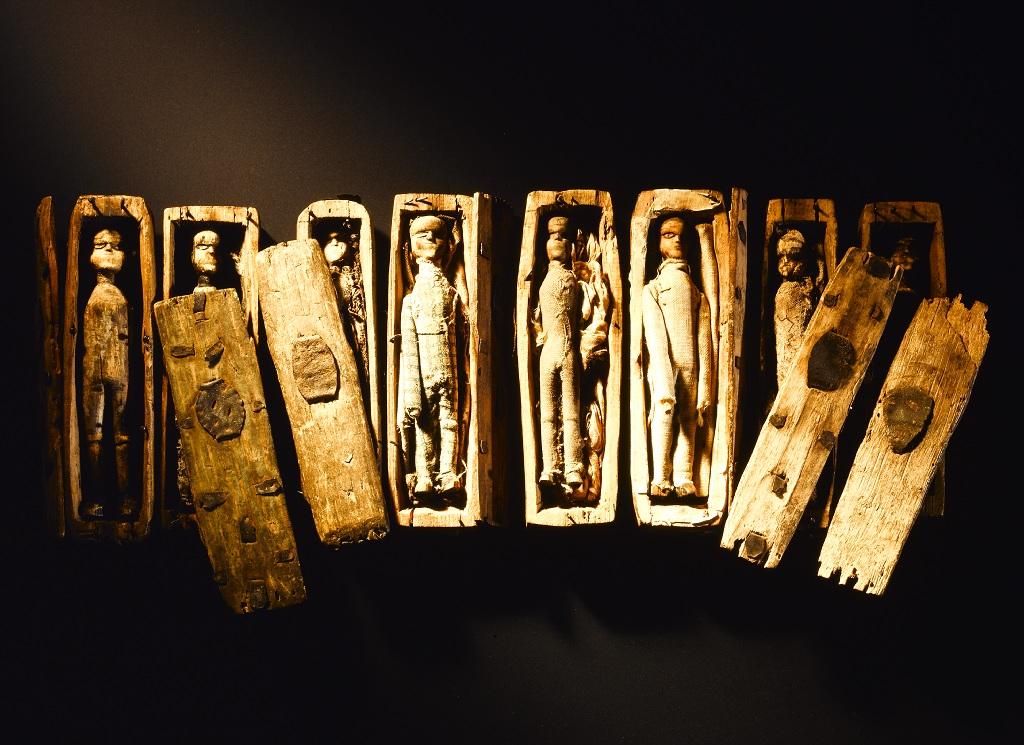
Set in Scotland's magnificent capital, Edinburgh, Murder dolls
is a tale of serial killers, Bodysnatchers and grisly science. The
story begins on a misty morning in 1836 with the discovery of 17
miniature wooden coffins. Inside each one, is an eerie, dressed doll.
The discovery of the dolls has led to some interesting theories –
everything from the work of a madman to tales of witchcraft. But some
believe that Edinburgh's miniature coffins may be connected to
Scotland's most notorious serial killers –Burke and Hare - two Irish
laborers who murdered seventeen victims in the 1800's. But how are the
dolls connected to the 17 murder victims – and who made them?
Burke and Hare are notorious even today, but in the time of
Ghosts of Albion their crimes are a matter of relatively recent memory.
Their murder spree, known as the West Port murders, began in Edinburgh
from late 1827 and continued for most of 1828. Their victims were
drugged and suffocated to keep them intact; the bodies were sold to a Dr
Robert Knox for dissection. In the end, a neighbour discovered the
body of their last victim and alerted the police. However, the evidence
of murder wasn't actually that good, and Hare was offered immunity if
he confessed and testified against Burke. Burke made his own confession
- in which he claimed that Dr Knox knew nothing of the origin of the
bodies they sold him - but was sentenced to death and hanged in January
1829.
Less well known is that Burke's lover (Helen M'Dougal) and Hare's wife
(Margaret, née Laird) were also implicated, though they were released
for lack of proof - both narrowly escaped death from an outraged public -
M'Dougal is thought to have left the country, while Margaret Hare's
dropped off the map. William Hare also dropped off the map, though
popular folklore invented a variety of painful ends for him. Despite
Burke's claim that Dr Knox was not involved, the scandal destroyed his
reputation in Edinburgh, and he went to London, and died in 1862.
At first theories on the dolls significance ranged from witchcraft
to child’s toys, but eventually it began to seem that the 17 tiny
figures could be effigies for the 17 murder victims a decade earlier.
Between 1827-1828 William Burke and William Hare lured in and murdered
their lodgers in a scheme to provide fresh bodies to the local anatomy
school. Dr. Robert Knox, a brilliant and well known local anatomy
lecturer purchased the bodies, and most likely knew that something was a
bit suspicious about his supply chain.
Mystery of Burke & Hare Murderdolls
One
of the most storied sites in all of southern New Jersey is a mysterious
body of water known as the Blue Hole. Located deep in the Pine Barrens
of Winslow, on the border of Camden and Gloucester Counties, this small
but legendary pool is said to not only be bottomless, but also a
frequent pit stop of the Jersey Devil.
A number of legends exist: that it is bottomless with powerful currents,
that the water is freezing cold year-round, and that the Jersey Devil
is active in the area.
New Jersey has probably spawned the most well known cryptozological,
paranormal oddity of the century, the Jersey Devil. The Beast, a
creature not scientifically proven to exist, has terrorized the
population of New Jersey for over 270 years. But in the back woods ,
hiding in the remote crevices of the Pine Barrens, there awaits a less
well known but equally mysterious legend, the Blue Hole.
Located deep in the Pine Barrens of Winslow Township, NJ, lies a
circular, perfectly crystal clear body of water(weird, as all sources of
water in the Pine Barrens are tea colored). This small but legendary
pool is not only said to be bottomless but a frequent pit stop of the
Jersey Devil, his personal portal to Hell, they say. Still as glass, the
water looks inviting, especially on a hot summer day. Yet locals warn
their children to stay away and whatever they do, don't swim in it.
Tales of unexplained whirpools and mysterious drownings have long been
part of the pools lore. For those who were lucky enough to get away have
claimed they felt an icy hand pulling them down into the chilly depths.
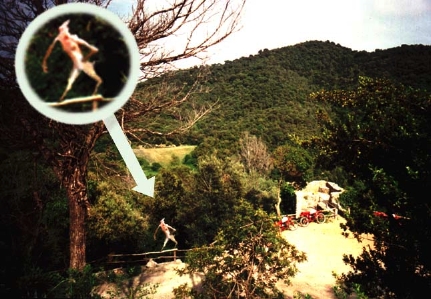
After people became afraid of it, the blue hole was largely abandoned.
Perhaps farmers and families in the area warned children against going
to the Blue Hole because the Jersey Devil lived there, and it would hurt
or steal them. Locals still go to the area and use it as a party spot.
There are many other 'blue holes' in the immediate vicinity, as well as
quicksand and other seasonal ponds and lakes that form from springs
seeping from high water table levels. What can not be so easily
explained is the color of the lake compared to other brackish waters in
the vicinit
The Devils Puddle - Legend Of The Blue Hole
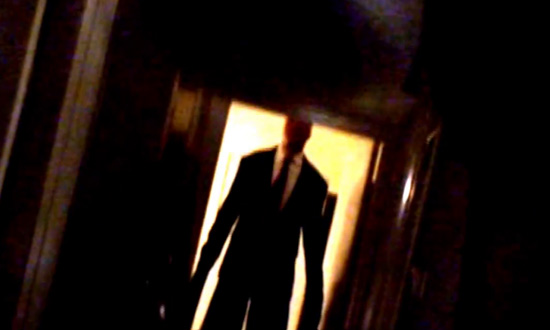
There are legends and
myths that have been around for centuries and have seared themselves
into our minds and culture. Then there are those that have been brought
to life by way of modern technologies reminding us of nightmares that
should have been buried and forgotten. One such legend is known through
internet popularity as Slender man.
The creature known as Slender man is said to have the appearance of a
tall, lanky man in a black suit. Not so scary, right? Just wait.
He towers at six to seven feet with unusually thin limbs. His face, if
you can call it that, is featureless and white, though some say that it
can morph into whatever you fear the most. His arms, however, can
stretch out to grab his victims and bend in unnatural ways with long,
talon-like fingers used to scratch at the windows of children. Yes
that’s right. While he haunts everyone who has the misfortune to see
him, he prefers to devour those that are 16 and younger. He is also said
to have multiple arms sometimes seen as long tentacles used to ensnare
whomever catches his eye, or should I say, the void where his face
should be.
Slender man is a silent stalker that likes to hide in plain sight and is
usually spotted in wooded areas where he could blend in amongst the
trees and dark corners of the forest. When he finds his victim of
choice, he follows them home and upon being seen through the window, can
use a form of hypnosis that compels you to walk right into his spindly
arms. Usually glimpsed at a distance, once he’s close enough to get a
good look at, that’s when he slinks into your home appearing in dark
hallways or blank t.v. screens.
American legend says that he was once a man who was tortured viciously,
first being beaten with a log, then impaled with a 2 foot stick and hung
from a tree with his arms and legs pulled from their sockets.
When captured, you will wake to find Slender man standing above you. He
will ask one question and if you’re lucky and get it right, he breaks
both your arms and legs. But if you are wrong, then he slowly sticks his
fingers down your throat pulling out the heart. In circles on the
internet Slender man is claimed to be the creation of a website called
Somethingawful.com. Many say that this alone debunks the mysterious
legend and closes the case on the creature’s fictitious existence. Well,
not quite.
It appears that the Slender man myth goes back a lot farther than is
claimed. He is based on something called Der Grossman, meaning “tall
man”, which is the Germanic version. Legend says that children would
site him in the Black Forest days before their disappearance. All that
was left behind would be the mutilated remains of livestock and in a few
cases, village inhabitants would be found several miles from their
homes impaled on the higher branches of the trees.
The Real Life Legend of Slender Man

The Hellfire Club
was a name for several exclusive clubs for high society rakes
established in Britain and Ireland in the 18th century, and was more
formally or cautiously known as the Order of the Friars of St. Francis
of Wycombe. These clubs were rumoured to be the meeting places of
"persons of quality" who wished to take part in immoral acts, and the
members were often very involved in politics. Neither the activities nor
membership of the club are easy to ascertain. The club motto was Fais
ce que tu voudras (Do what thou wilt), a philosophy of life associated with François Rabelais' fictional abbey at Thélème and later used by Aleister Crowley.
Throughout history, secret societies have captured the public's
attention. They have been the basis for many conspiracy theories mainly
based on their tight secrecy. The question still remains today if they
really were secret societies set to overtake the world or if they were
just bored people who wanted to give the world something to talk about.
One of those secret societies was the Hell Fire Club in England.
There has been much speculation about the layout and the design of the
Hellfire Caves. Map of the Hellfire Caves with female reproductive
system showing the perfect match of the Ovary, Womb, Pubis, Shaft and
Testicles. Just a coincidence?
The purpose of this club was to enliven the "dull traditional Sunday"
with drinks and rude songs. According to a contemporary satire "Religion
is their scorn, foul vice their Pride, The Clergy is their Subject to
deride". It is generally assumed that during these rakes' meeting
parodies of religious rites were carried out, though these were probably
more akin to Blackadder's and Melchett's drinking nights than to the
generally imagined Satanic ritual.
The Hell Fire Club was established in the early 1700s by Sir Francis
Dashwood. It began as a mockery of religion but became something much
more. Dashwood was always at odds with religion and was not quiet about
his feelings in that regard. He took many opportunities to mock
religion, especially Catholicism. This included the establishment of The
Friars of St. Francis of Weycomb (some called it Medmenham which was
the name of the abbey the group made its home in) as the Hell Fire Club
was originally known as. According to Daniel Pratt Mannix, "The original
Hell-Fire Club had been abolished by special order of the Lord
High Chancellor, because even in that broadminded time the members had
carried things a little too far when they celebrated Mass on the body of
a naked girl stretched out on one of the barroom tables." Dashwood
recreated the group under the new name but the public kept calling the
group The Hell Fire Club.
Hell Fire Club Secret Society - Sex, Satanism and Secret Societies
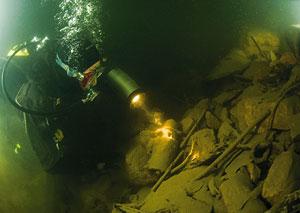
In
a dense mountain forest high up in the Austrian Alps, 60 miles from
Salzburg, the mysterious Lake Toplitz lies isolated. It is surrounded by
cliffs and forests in the picturesque Salzkammergut lake district
within the Totes Gebirge, or dead mountains. Luftwaffe
Commander-in-Chief Hermann Goering had a villa not far from the lake. He
would sit in the local bar with Adolf Hitler himself, communing
contentedly with the villagers.
This region was intended to be the Alpenfestung, the Reich's Alpine
Fortress and last redoubt, but by April 1945, Hitler was dead, the
Allies were closing in, and the Reich found itself out of time. Allied
artillery echoed in the mountains. Many of the last leaders of the Nazi
regime fled here - some to make a last stand, others to try to preserve
some shred of the Reich in hope of a future rebirth. Among the artifacts
hidden here is rumored to be a horde of Nazi gold.
Supposedly, the Nazis stashed vast quantities of gold and other
priceless plunder, including the lost panels from Russia’s Amber
Chamber, as well as documents detailing the whereabouts of other Third
Reich caches. These rumors have lured treasure hunters into its depths,
some to their death.
Local villagers hired by the German army to transport heavy loads to the
lake shore helped fuel rumors of sunken treasure. "Based on what they
testified, something was definitely submerged in the lake — whether it’s
a treasure remains to be seen," said Albrecht Syen, landlord of the
local Fischer Hut and custodian of memorabilia from past dives. "There’s
official documentation of a large delivery taken to the lake, but
nobody knows what happened to it."
Ida
Weisenbacher was a 21-year-old farm girl when Nazi soldiers arrived at
her door on February 23, 1945. "It was five o'clock in the morning, we
were still in bed when we heard the knock on the door," claims
Weisenbacher. "'Get up immediately. Hitch up the horse wagon, we need
you.'" The soldiers needed the wagon because their truck had reached the
end of the road and only horses could venture further to the lake's
shore. "A commander was there. He told us to bring these boxes as fast
as possible to Lake Toplitz," says Weisenbacher.
According to Weisenbacher, each box was labeled with bold letters and a
number. Three wagonloads were taken to Lake Toplitz. "When I brought the
last load, I saw how they went on to the lake and dropped the boxes
into the water.... The S.S. kept shoving me away but I saw the boxes
were sunk into the lake."
The Lost Treasure of Treacherous Lake Toplitz






